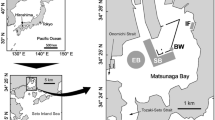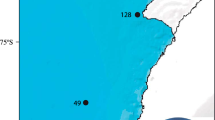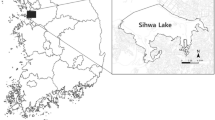Abstract
In recent decades, the Dead Sea region has suffered greatly from anthropogenic activities that have resulted in a massive decrease of the Dead Sea water level. This decrease has allowed the penetration of fresh ground water into the underground layer, which dissolved the salt layer and created sinkholes. Presently there are over 5000 sinkholes spread across the west bank of the Dead Sea, some of which are filled with water originating from rainfall, flash floods and spring water. Although sinkholes are detrimental to road infrastructure and tourist sites, they have dramatically increased the number of aquatic habitats surrounding the Dead Sea. In a cross-sectional study of 94 sinkholes along the north-west bank of the Dead Sea, coupled with a longitudinal study of six sinkholes, we examined how the community of invertebrates in the sinkholes is affected by environmental and geographic variables and how biological succession occurs in the sinkholes. We found that sinkholes are populated mainly by aquatic insects, which have high tolerance of a variety of environmental conditions. We also found that the community of invertebrates in the sinkholes is shaped by environmental variables such as salinity, pH, dissolved oxygen concentration, water temperature and the size of the sinkhole. We further found that the geographic distance between the sinkholes increases spatial species turnover and that species turnover across time was high. Patterns of species composition were similar in all the sinkholes, with the community structure during the wet season changing from early to mid-season, and then again from mid-season to late season. Interestingly, despite the extreme conditions of the water of the sinkholes, their seasonal succession processes were similar to those of temporary water bodies along the Mediterranean coast of Israel.







Similar content being viewed by others
References
Abellán P, Gómez-Zurita J, Millán A, Sánchez-Fernández D, Velasco J, Galián J, Ribera I (2007) Conservation genetics in hypersaline inland waters: mitochondrial diversity and phylogeography of an endangered Iberian beetle (Coleoptera: Hydraenidae). Conserv Genet 8:79–88
Adar O, Groner E, Natan GB (2014) Colonization of a new habitat: the case of the Dead Sea sinkholes—preliminary observations. Negev Dead Sea Arava Stud 6:74–89
Angelon KA, Petranka JW (2002) Chemicals of predatory mosquitofish (Gambusia affinis) influence selection of oviposition site by Culex mosquitoes. J Chem Ecol 28:797–806
Baselga A (2010) Partitioning the turnover and nestedness components of beta diversity. Glob Ecol Biogeogr 19:134–143
Beketov MA, Liess M (2005) Acute contamination with esfenvalerate and food limitation: chronic effects on the mayfly, Cloeon dipterum. Environ Toxicol Chem 24:1281–1286
Ben-David E (2005) Streams rehabilitation: sensitivity of invertebrates to salification. M.Sc. thesis, Tel Aviv University (in Hebrew)
Beutel R (1999) Morphology and evolution of the larval head of Hydrophiloidea and Histeroidea (Coleoptera: Staphyliniformia). Tijdschrift voor Entomologie 142:9–30
Boix D, Kneitel J, Robson BJ, Duchet C, Zúñiga L, Day J, Gascón S, Sala J, Quintana XD, Blaustein L (2016) Invertebrates of freshwater temporary ponds in Mediterranean climates. In: Batzer D, Boix D (eds) Invertebrates in freshwater wetlands. Springer, New York, pp 141–189
Bournaud M, Richoux P, Usseglio-Polatera P (1992) An approach to the synthesis of qualitative ecological information from aquatic Coleoptera communities. Regul Rivers Res Manag 7:165–180
Brammer CA, von Dohlen CD (2007) Evolutionary history of Stratiomyidae (Insecta: Diptera): the molecular phylogeny of a diverse family of flies. Mol Phylogenet Evol 43:660–673
Cavender-Bares J, Kozak KH, Fine PV, Kembel SW (2009) The merging of community ecology and phylogenetic biology. Ecol Lett 12:693–715
Chapman J, Reynolds D, Smith A, Smith E, Woiwod I (2004) An aerial netting study of insects migrating at high altitude over England. Bull Entomol Res 94:123–136
Cirés S, Wörmer L, Agha R, Quesada A (2013) Overwintering populations of Anabaena, Aphanizomenon and Microcystis as potential inocula for summer blooms. J Plankton Res 35:1254–1266
Collins NC (1975) Population biology of a brine fly (Diptera: Ephydridae) in the presence of abundant algal food. Ecology 56:1139–1148
Craft C, Megonigal P, Broome S, Stevenson J, Freese R, Cornell J, Sacco J (2003) The pace of ecosystem development of constructed Spartina alterniflora marshes. Ecol Appl 13:1417–1432
Dole-Olivier MJ, Galassi DMP, Marmonier P, Des Châtelliers MC (2000) The biology and ecology of lotic microcrustaceans. Freshw Biol 44:63–91
Furth DG (1983) Aquatic entomofauna of a Dead Sea oasis. Hydrobiologia 102:3–25
Goldberg T, Nevo E, Degani G (2009) Breeding site selection according to suitability for amphibian larval growth under various ecological conditions in the semi-arid zone of northern Israel. Ecol Mediterr 35:65–74
Haedicke CW, Redei D, Kment P (2017) The diversity of feeding habits recorded for water boatmen (Heteroptera: Corixoidea) world-wide with implications for evaluating information on the diet of aquatic insects. Eur J Entomol 114:147–159
Herbst G, Bromley H (1984) Relationships between habitat stability, ionic composition, and the distribution of aquatic invertebrates in the desert regions of Israel. Limnol Oceanogr 29:495–503
Herbst DB, Conte PF, Brookes VJ (1988) Osmoregulation in an alkaline salt lake insect, Ephydra (Hydropyrus) hians Say (Diptera: Ephydridae) in relation to water chemistry. J Insect Physiol 34:903–909
Keiller BM (2011) The impact of sinkholes on species richness and diversity: implications for mine rehabilitation. Ph.D. thesis, University of the Witwatersrand
Kis-Papo T, Kirzhner V, Wasser SP, Nevo E (2003) Evolution of genomic diversity and sex at extreme environments: fungal life under hypersaline Dead Sea stress. Proc Natl Acad Sci USA 100:14970–14975
Legendre P, Gallagher ED (2001) Ecologically meaningful transformations for ordination of species data. Oecologia 129:271–280
Lepš J, Šmilauer P (2003) Multivariate analysis of ecological data using CANOCO. Cambridge University Press, Cambridge
Lieven AFV (1998) Functional morphology and phylogeny of the larval feeding apparatus in the Dasyheleinae and Forcipomyiinae (Diptera, Ceratopogonidae). Deutsche Entomologische Zeitschrift 45:49–64
Macan T (1976) A twenty-one-year study of the water-bugs in a moorland fishpond. J Anim Ecol 45:913–922
MacArthur R, Wilson E (1967) The theory of island biogeography. Princeton University Press, Princeton
Matthies D, Bräuer I, Maibom W, Tscharntke T (2004) Population size and the risk of local extinction: empirical evidence from rare plants. Oikos 105:481–488
Monakov A (1972) Review of studies on feeding of aquatic invertebrates conducted at the Institute of Biology of Inland Waters, Academy of Science, USSR. J Fish Board Can 29:363–383
Nof RN, Baer G, Ziv A, Raz E, Atzori S, Salvi S (2013) Sinkhole precursors along the Dead Sea, Israel, revealed by SAR interferometry. Geology 41:1019–1022
Oscoz J, Galicia D, Miranda R (2011) Taxa description and biology. In: Oscoz J, Galicia D, Miranda R (eds) Identification guide of freshwater macroinvertebrates of Spain. Springer, Dordrecht, pp 47–141
Pajunen VI, Pajunen I (1993) Competitive interactions limiting the number of species in rock pools: experiments with Sigara nigrolineata. Oecologia 95:220–225
Pinder LCV (1986) Biology of freshwater Chironomidae. Annu Rev Entomol 31:1–23
Popham EJ, Bryant MT, Savage AA (1984) The role of front legs of British corixid bugs in feeding and mating. J Nat Hist 18:445–464
Raw JL, Perissinotto R, Miranda NAF, Peer N (2016) Feeding dynamics of Melanoides tuberculata (Müller, 1774). J Molluscan Stud 82:328–335
Resetarits WJ (2001) Colonization under threat of predation: avoidance of fish by an aquatic beetle, Tropisternus lateralis (Coleoptera: Hydrophilidae). Oecologia 129:155–160
Robison BH (2009) Conservation of deep pelagic biodiversity. Conserv Biol 23:847–858
Rossi V, Benassi G, Belletti F, Menozzi P (2011) Colonization, population dynamics, predatory behaviour and cannibalism in Heterocypris incongruens (Crustacea: Ostracoda). J Limnol 70:102–108
Saha N, Aditya G, Saha GK, Hampton SE (2010) Opportunistic foraging by Heteropteran mosquito predators. Aquat Ecol 44:167–176
Sato M (1991) Comparative morphology of the mouthparts of the family Dolichopodidae (Diptera). Insecta Matsumurana 45:49–75
Schneider F (1969) Bionomics and physiology of aphidophagous Syrphidae. Annu Rev Entomol 14:103–124
Shaalan EAS, Canyon DV, Muller R, Younes MWF, Abdel-Wahab H, Mansour AH (2007) A mosquito predator survey in Townsville, Australia, and an assessment of Diplonychus sp. and Anisops sp. predatorial capacity against Culex annulirostris mosquito immatures. J Vector Ecol 32:16–21
Silberbush A, Blaustein L, Margalith Y (2005) Influence of salinity concentration on aquatic insect community structure: a mesocosm experiment in the Dead Sea Basin Region. Hydrobiologia 548:1–10
Thompson DJ (1978) Prey size selection by larvae of the damselfly, Ischnura elegans (Odonata). J Anim Ecol 47:769–785
Verberk WC, Siepel H, Esselink H (2008) Life-history strategies in freshwater macroinvertebrates. Freshw Biol 53:1722–1738
Weider LJ, Lampert W (1985) Differential response of Daphnia genotypes to oxygen stress: respiration rates, hemoglobin content and low-oxygen tolerance. Oecologia 65:487–491
Wollmann K (2000) Corixidae (Hemiptera, Heteroptera) in acidic mining lakes with pH ≤ 3 in Lusatia, Germany. Hydrobiologia 433:181–183
Yechieli Y, Gavrieli I, Berkowitz B, Ronen D (1998) Will the Dead Sea die? Geology 26:755–758
Yechieli Y, Abelson M, Bein A, Crouvi O, Shtivelman V (2006) Sinkhole “swarms” along the Dead Sea coast: reflection of disturbance of lake and adjacent groundwater systems. Geol Soc Am Bull 118:1075–1087
Yechieli Y, Abelson M, Baer G (2016) Sinkhole formation and subsidence along the Dead Sea coast, Israel. Hydrogeol J 24:601–612
Acknowledgements
We are grateful to V. Baranov, L. Blaustein, I. Blecher, V. Chikatonov, J. A. Delgado, A. Friedberg, L. Friedman, J. Martin, H. Moller-Pillot, T. Novoselsky, T. Snor and Z. Yanai for their help in taxonomic identification of some of the invertebrates. We are also grateful to C. Yule and two anonymous reviewers for valuable comments on the manuscript. We further thank E. Hazan from the Einot Tzukim nature reserve for assistance in the field, I. Gavrieli and G. Lapid from the Geological Survey of Israel for dating the sinkholes, and D. Milstein from the Israel Nature and Parks Authority for supporting us throughout the project. This study was funded by the Israel Nature and Parks Authority.
Author information
Authors and Affiliations
Contributions
FBA conceived and designed the study. OH performed the research, analyzed the data and wrote the paper. FBA provided editorial advice. All authors read and approved the final manuscript.
Corresponding author
Additional information
Publisher’s Note
Springer Nature remains neutral with regard to jurisdictional claims in published maps and institutional affiliations.
Rights and permissions
About this article
Cite this article
Hirshberg, O., Ben-Ami, F. Sinkholes as a source of life in the Dead Sea region. Aquat Sci 81, 14 (2019). https://doi.org/10.1007/s00027-018-0611-2
Received:
Accepted:
Published:
DOI: https://doi.org/10.1007/s00027-018-0611-2




